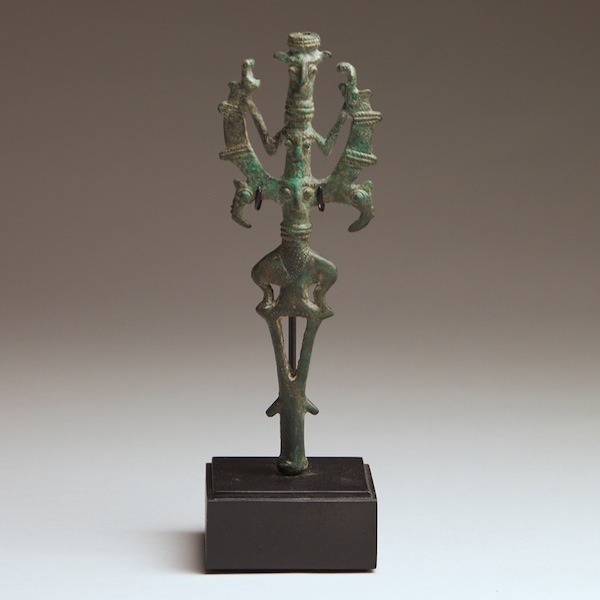
A Luristan bronze finial with master of the beast motif. Bronze, Persia, 1000 B.C. H: 7-1/4″. Anavian Gallery, The Manhattan Art & Antiques Center [Gallery 81/212.319.5030]
Can you guess the purpose of this mysterious artifact? Today for #WhatIsItWednesday, the blogosphere turns an investigative eye to cryptic objects, past and present, but the exact use of this relic has eluded scholars for centuries. We know that this Early Iron Age Luristan bronze is a finial, an ornament used to mark the apex of a roof or similar structure, but as The British Museum notes, Luristan bronze finials “seem not to be part of a larger object, but to be complete in themselves.”
This example depicts a figure wearing an elaborate headdress decorated with a “master of the beasts” motif, represented by the subdued wild animals flanking the figure’s head–a theme found throughout Near Eastern art. As The British Museum notes, these finials have “something of the look of a battle or processional standard, as known from Assyrian reliefs, [but] they seem rather small for this purpose.”
The artifact is unique to the Luristan region of western Iran, which produced a range of bronze weapons, tools, and ceremonial objects, between 10th-7th century B.C, using a lost wax process. Dating to 1000 B.C., this finial is among the earliest and most enigmatic examples of this rich culture. Like all known Luristan bronze, this work likely comes from a plundered cemetery or shrine, and remains one of the mysteries of antiquity. To shop or learn more about this unique work, contact Anavian Gallery.






